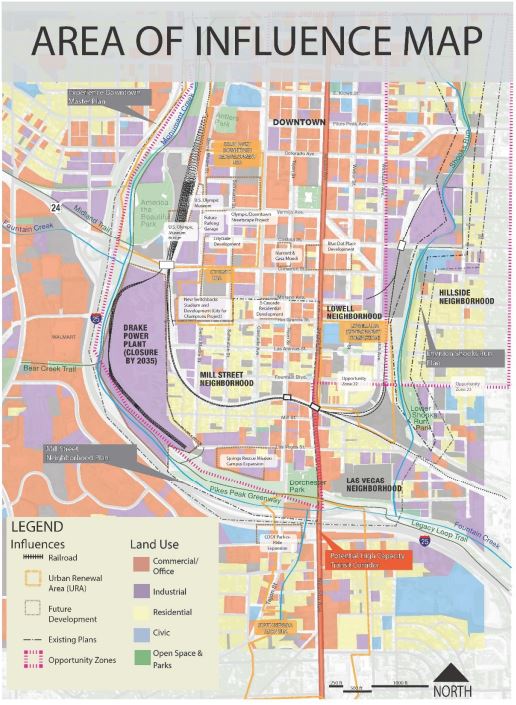The city of Colorado Springs will receive $2.5 million from the federal government to determine the future of two aging railroad bridges south of downtown.
The money will go toward engineering and environmental work related to the railroad bridges over south Tejon Street and South Nevada Avenue. The Tejon Street bridge has been in use for more than a century. The Nevada Avenue bridge was built in 1948.
Gayle Sturdivant, deputy public works director for Colorado Springs, said the Tejon bridge is especially of concern.
"Both us and the railroads have looked at doing temporary improvements on the bridge to get it to limp along through its life cycle, but it is in desperate need of being replaced," she said.
Both have a handful of safety issues for pedestrians and bicyclists traveling under them as well as issues with clearance for large commercial vehicles. According to the city's website, the freight rail corridor no longer serves many of the properties in the area, but is still used heavily by the Union Pacific and BNSF railroads as a key north-south through route.
The city has yet to decide exactly what to do to improve the crossing, but several alternatives are being considered. Those include various shifts to the alignment of the railroad tracks.

"In order to get enough vertical clearance and still get Tejon and Nevada streets to work with all the existing land uses that are adjacent to those roads, we really need to move that rail alignment to get that vertical clearance underneath them," Sturdivant said.
Repairing the bridges where they are now is not an option, as it wouldn't improve safety or address issues with the height of the crossings. Other ideas that have been scrapped include relocating the rail underground, making Nevada Ave. and Tejon St. a one-way pair, and relocating the rail out of the downtown area.
The project is expected to cost $100 million and includes work on two other bridges within the Shooks Run corridor. The city of Colorado Springs is contributing an additional $1.3 million to the project using funds from the Pikes Peak Rural Transportation Authority (PPRTA).









